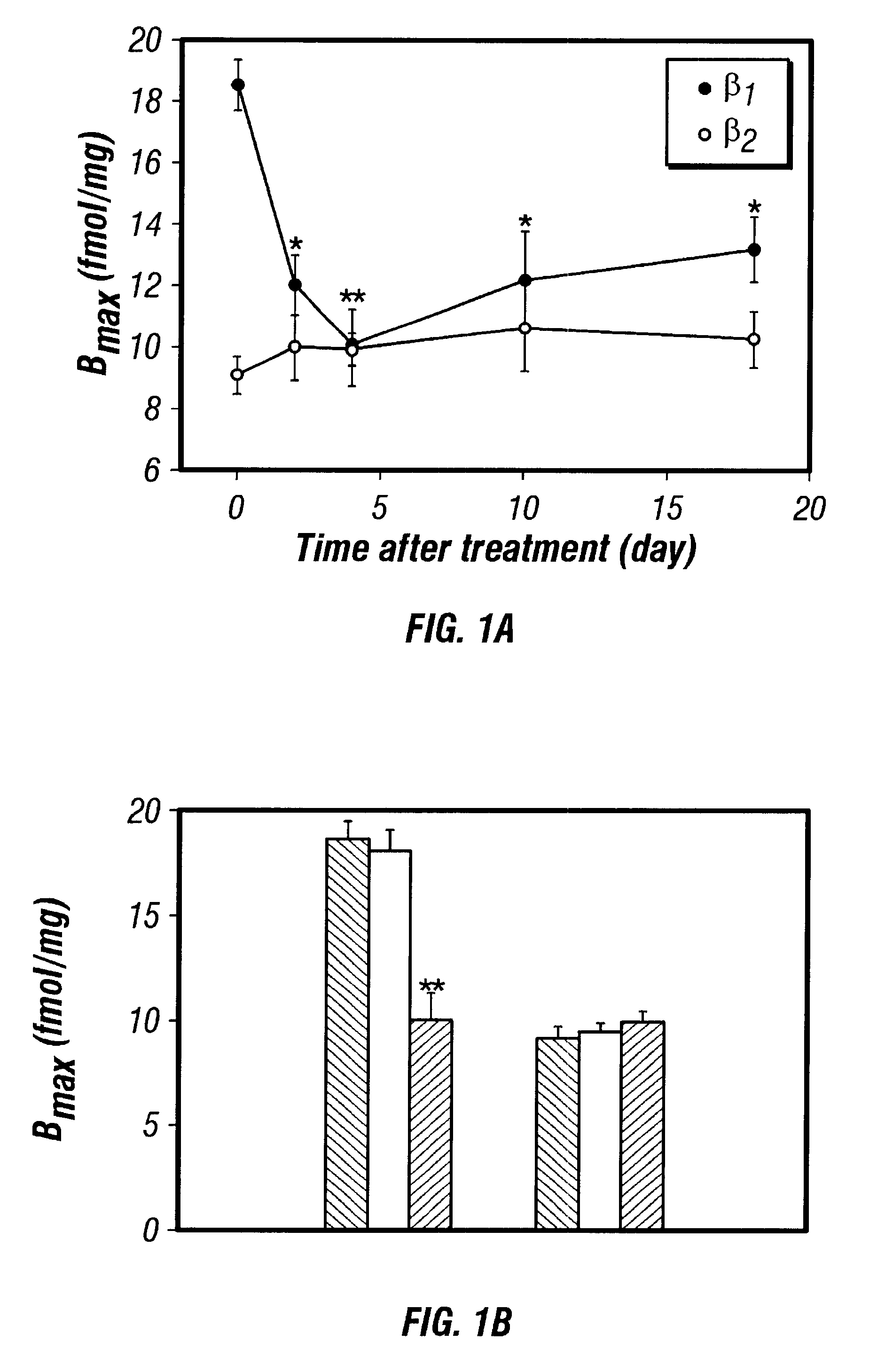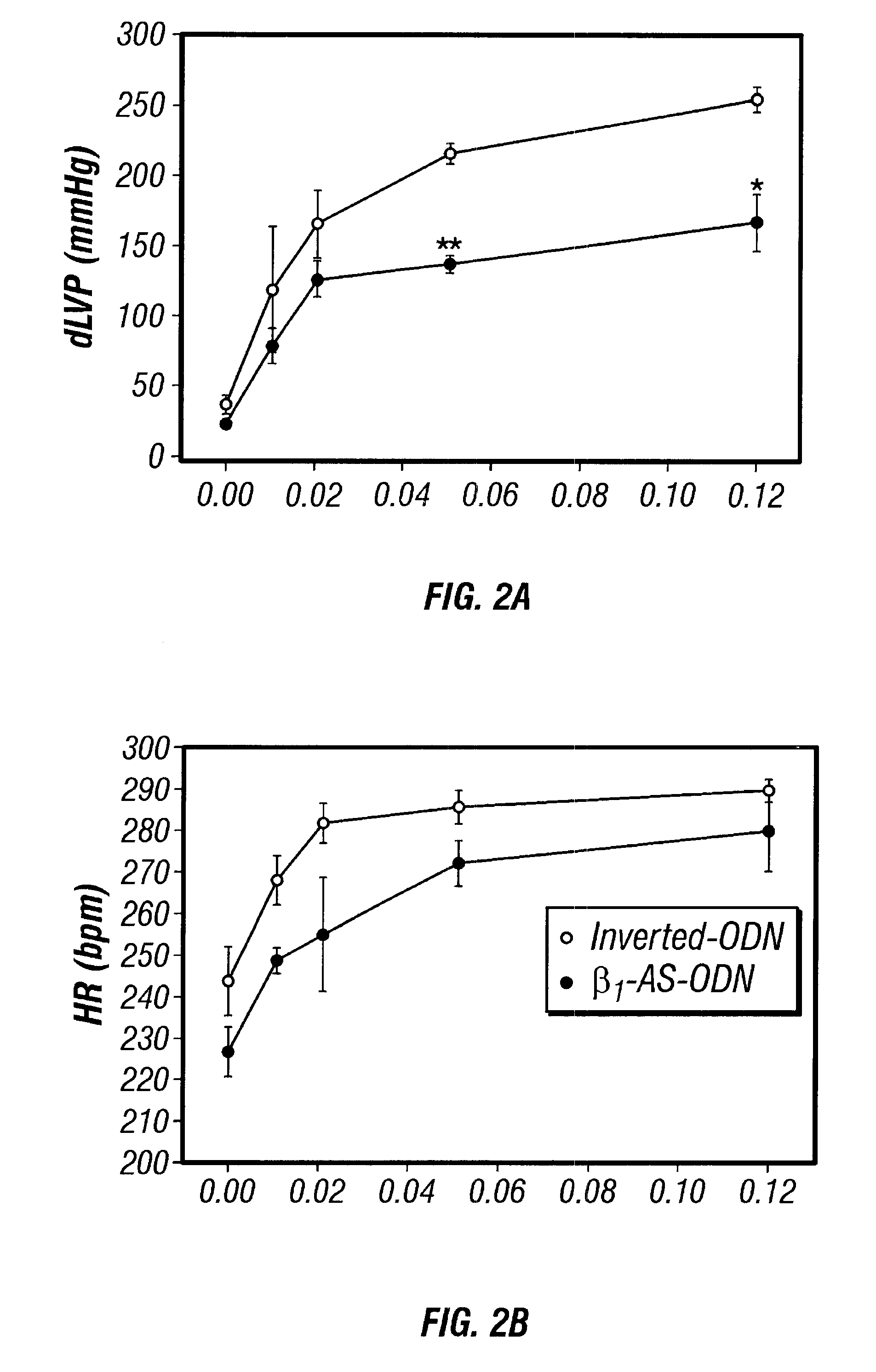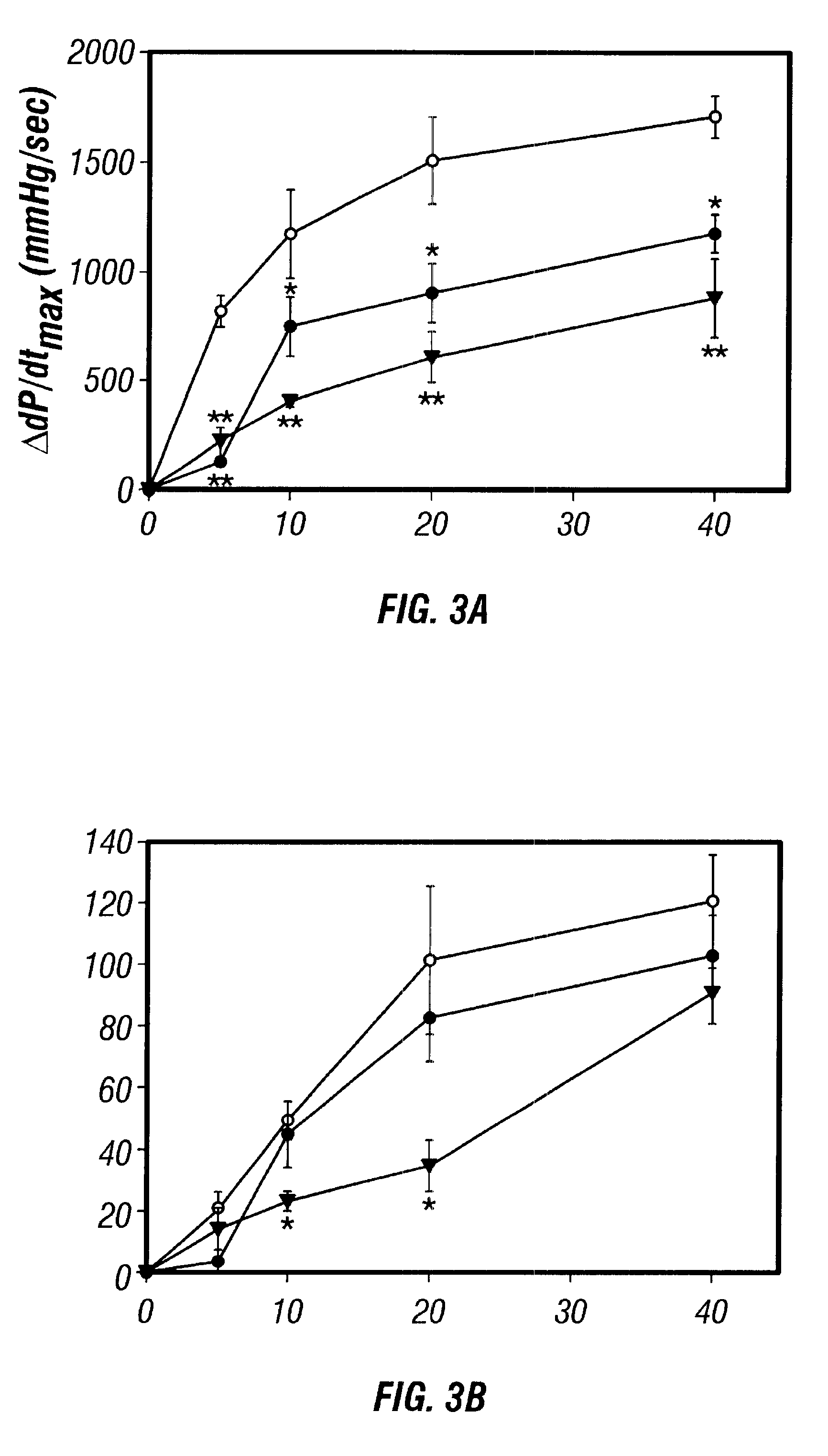Antisense compositions targeted to beta1-adrenoceptor-specific mRNA and methods of use
a technology of beta1-adrenoceptor and composition, applied in the field of antisense oligonucleotide composition, can solve the problems of short lasting effects of these drugs that often require multiple, hypertensive crisis, and pathological consequences, and achieve the effects of reducing the level of .beta..sub.1-ar produced, inhibiting or reducing expression, and reducing translation
- Summary
- Abstract
- Description
- Claims
- Application Information
AI Technical Summary
Benefits of technology
Problems solved by technology
Method used
Image
Examples
example 1
5.1 Example 1
Antisense Inhibition of .beta..sub.1 -AR mRNA
.beta..sub.1 -antisense, through specific inhibitions of .beta..sub.1 -AR expression, decreases the functional sensitivity of .beta..sub.1 -AR-mediated responses in the face of sympathetic activation and thereby achieves an antihypertensive effect. In this example, an AS-ODN was designed complementary to rat .beta..sub.1 -AR mRNA and its ability was demonstrated to inhibit .beta..sub.1 -AR density and function in the heart and to reduce BP in spontaneously hypertensive rats.
5.1.1 Methods
5.1.1.1 Antisense Design and Administration
AS-ODN and inverted ODN control were 15-mer and targeted to the AUG start codon of rat .beta..sub.1 -AR mRNA (Machida et al., 1990). The sequence of AS-ODN is 5'-CCGCGCCCATGCCGA-3' (SEQ ID NO:195), and the inverted ODN is 5'-AGCCGTACCCGCGCC-3' (SEQ ID NO:196). This AS-ODN was chosen from 6 AS candidates targeted to different regions of .beta..sub.1 -AR mRNA on the basis of the intensity of cardiac .be...
example 2
5.2 Example 2
Prolonged Reduction in High Blood Pressure With .beta..sub.1 AR Oligodeoxynucleotides
Since the introduction of propranolol in 1965, .beta.-blockers have become major first-line drugs for hypertension. Through the inhibition of .beta.-adrenergic receptors in heart and kidney, .beta.-blockers lower high blood pressure via the reduced response to the sympathetic nervous system. However, all current .beta.-blockers have to be taken daily. Also, most have central nervous system side effects that lead to poor patient compliance. Furthermore, the mechanism of .beta.-blockade in hypertension is not well understood (Man in't Veld et al., 1988). Antisense oligonucleotides have been successfully constructed to components of the renin-angiotensin system (RAS) to decrease blood pressure (Phillips et al., 1994). In view of this, novel antisense oligonucleotides targeted to .beta..sub.1 -adrenergic receptors (.beta..sub.2 -ARs), or the brain. Therefore, it is likely to have fewer side...
example 3
5.3 EXAMPLE 3
Treatment of Hypertension Using Antisense Compounds
5.3.1 Materials and Methods
5.3.1.1 Antisense Design and Administration
AS-ODN and inverted-ODN control were 15 mer and targeted to the AUG start codon of rat .beta..sub.1 -adrenoceptor mRNA (Machida et al., 1990). The sequence of AS-ODN was 5'-CCGCGCCCATGCCGA-3' (SEQ ID NO:1), and the sequence of the inverted-ODN was 5'-AGCCGTACCCGCGCC-3' (SEQ ID NO:138). This AS-ODN was chosen from six AS candidates targeted to different regions of .beta..sub.1 -adrenoceptor mRNA, based on the intensity of cardiac .beta..sub.1 -AR inhibition and reduction of blood pressure in SHR. These oligonucleotides were modified by backbone phosphorothioation. ODNs delivered with cationic liposomes were injected into tongue vein.
5.3.1.2 Preparation of Liposomes and ODN / Liposome Complex
The cationic lipid 1,2-bis(oleoyloxy)-3-(trimethylammonio)propane (DOTAP) was mixed with a helper lipid L-.alpha. dioleoyl phosphatidylethanolamine (DOPE, Avanti Pola...
PUM
| Property | Measurement | Unit |
|---|---|---|
| Fraction | aaaaa | aaaaa |
| Fraction | aaaaa | aaaaa |
| Fraction | aaaaa | aaaaa |
Abstract
Description
Claims
Application Information
 Login to View More
Login to View More - R&D
- Intellectual Property
- Life Sciences
- Materials
- Tech Scout
- Unparalleled Data Quality
- Higher Quality Content
- 60% Fewer Hallucinations
Browse by: Latest US Patents, China's latest patents, Technical Efficacy Thesaurus, Application Domain, Technology Topic, Popular Technical Reports.
© 2025 PatSnap. All rights reserved.Legal|Privacy policy|Modern Slavery Act Transparency Statement|Sitemap|About US| Contact US: help@patsnap.com



